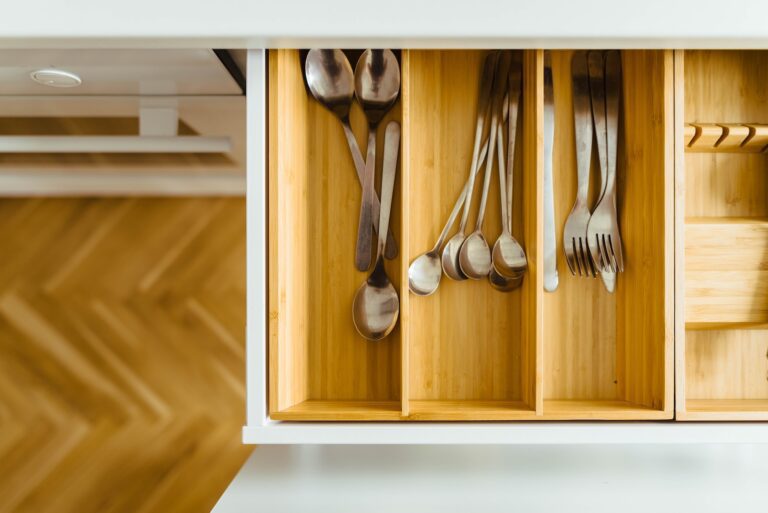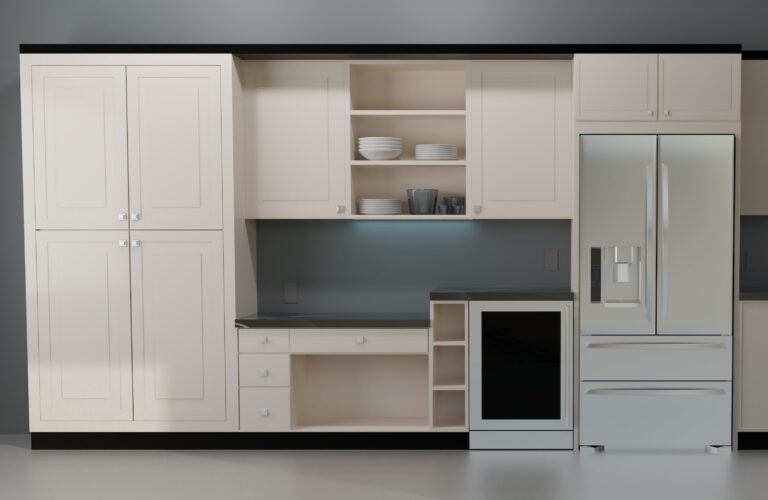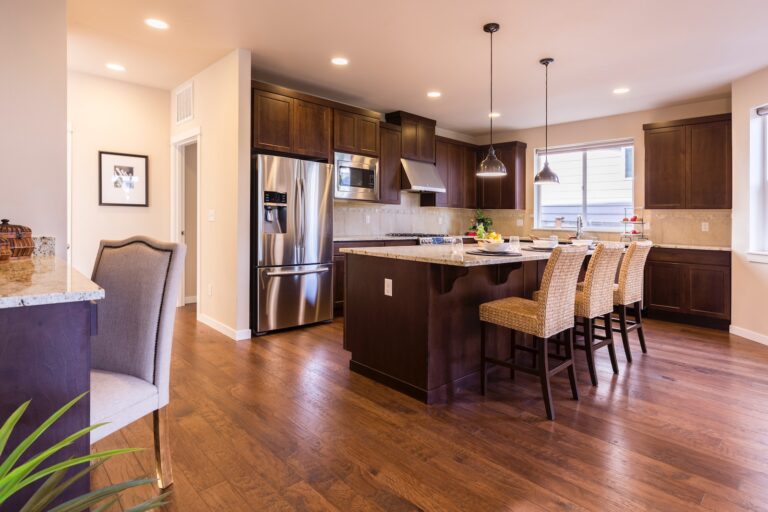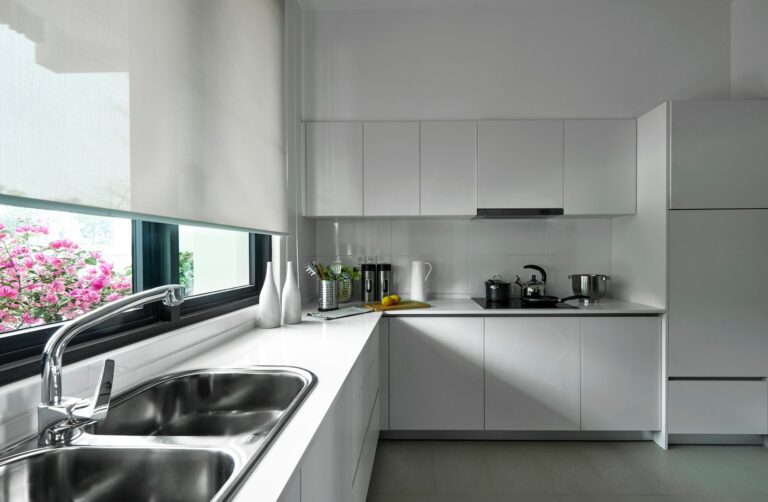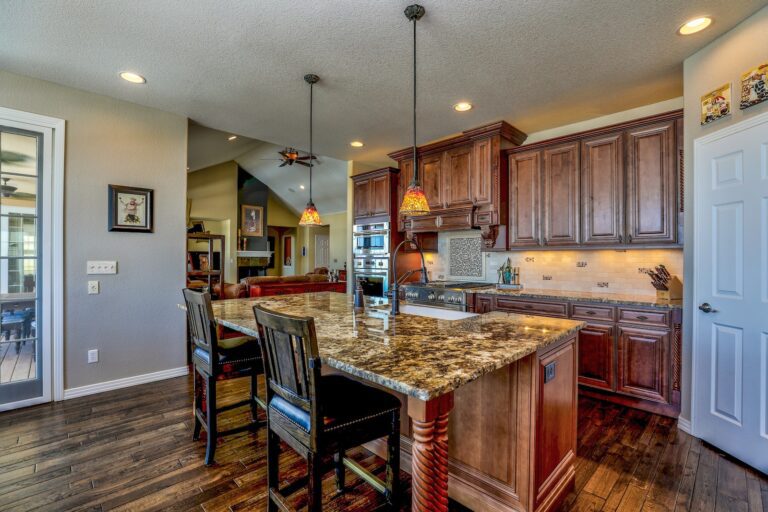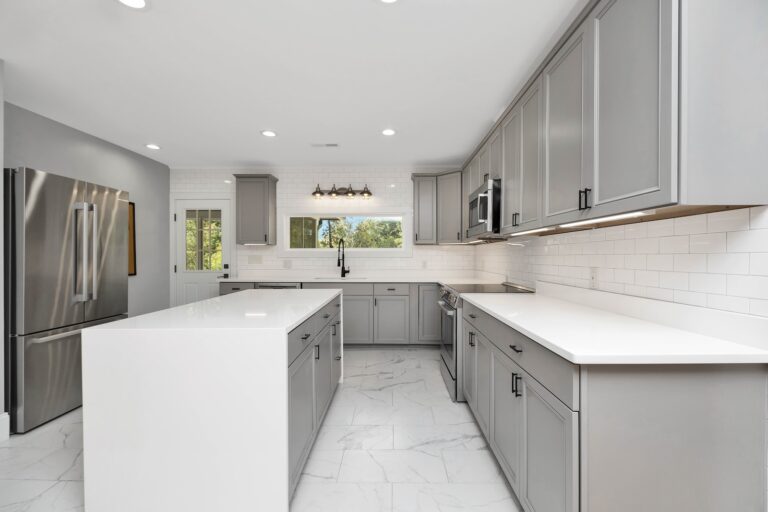How To Organize Food In Kitchen Cabinets?
Keeping your kitchen cabinets organized can be a challenge, especially when it comes to storing food items. With so many different types of food and packaging options, it’s easy for things to quickly become disorganized and cluttered. But fear not! With a few simple tips and tricks, you can easily learn how to organize your food in kitchen cabinets like a pro.
In this guide, we’ll explore some of the best practices for organizing your food in kitchen cabinets, from sorting and grouping items to maximizing space and accessibility. Whether you’re a seasoned home cook or just starting out, you’ll find plenty of helpful advice to make your kitchen more efficient, organized, and enjoyable to use. So let’s get started!
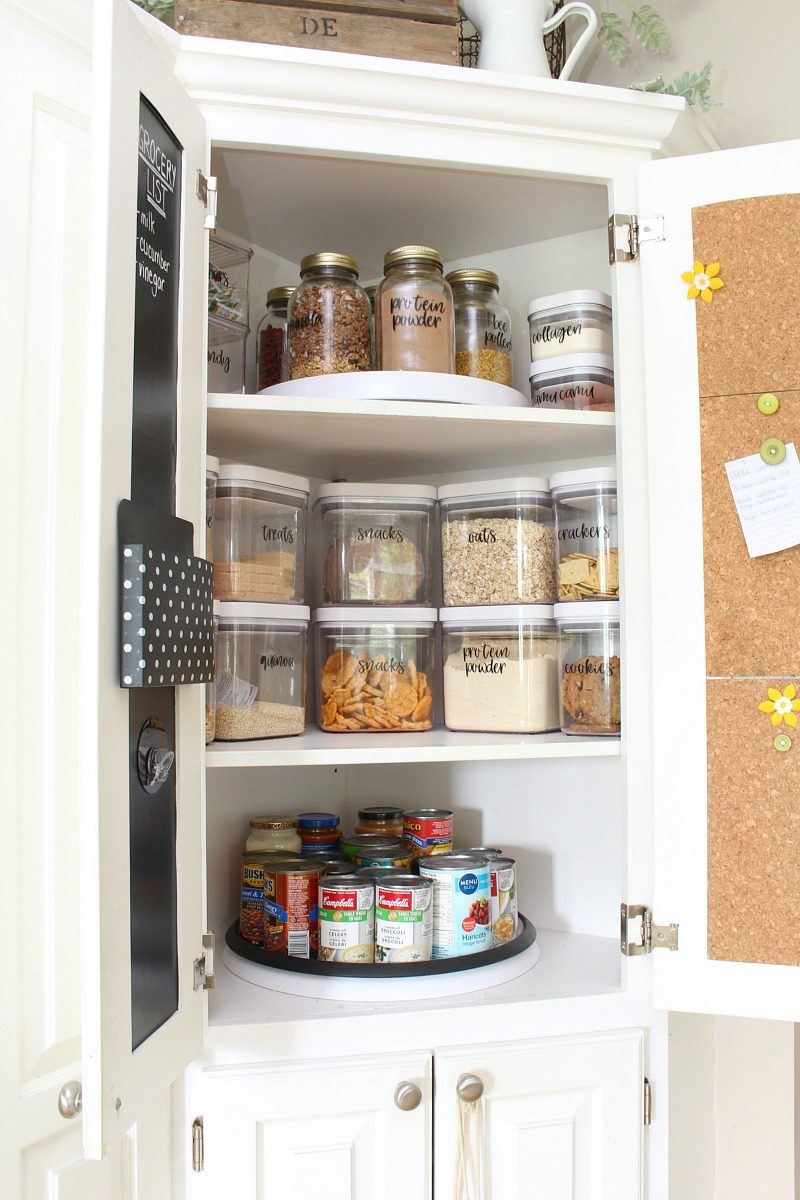
How to Organize Food in Kitchen Cabinets: A Comprehensive Guide
1. Assess Your Cabinet Space
The first step in organizing your kitchen cabinets is to assess the available space. Take a look at each cabinet and evaluate how much space you have to work with. Consider the size and shape of each cabinet and note any shelves or drawers that may be present. This information will help you determine the best way to organize your food items.
Once you have assessed your cabinet space, it’s time to take stock of your food items. Start by emptying out each cabinet and grouping similar items together. This will help you see what you have and identify items that may be expired or no longer needed.
Benefits of Assessing Your Cabinet Space
– Ensures that you have enough space to store all of your food items
– Helps you identify any expired or unnecessary items
– Makes it easier to see what you have and avoid buying duplicates
Vs. Not Assessing Your Cabinet Space
– May result in overcrowded cabinets and difficulty finding items
– Can lead to expired or unnecessary food items taking up valuable space
– Makes it more difficult to keep track of what you have and what you need to buy
2. Categorize Your Food Items
Once you have assessed your cabinet space and taken stock of your food items, it’s time to categorize them. This step involves grouping similar items together, such as canned goods, pasta, snacks, and baking supplies.
Consider creating a list of categories and labeling each cabinet shelf or drawer accordingly. This will help you keep track of where each item belongs and make it easier to find what you need.
Benefits of Categorizing Your Food Items
– Makes it easier to find what you need
– Helps you keep track of what you have and what you need to buy
– Saves time when cooking or preparing meals
Vs. Not Categorizing Your Food Items
– May result in difficulty finding specific items
– Can lead to expired or unnecessary food items taking up valuable space
– Makes it more difficult to keep track of what you have and what you need to buy
3. Use Containers and Labels
Using containers and labels is an effective way to keep your food items organized. Consider using clear containers for items like cereal, pasta, and snacks, as this will make it easier to see what’s inside.
Label each container with the item name and expiration date to help you keep track of what you have and when it needs to be used. You can also use labels to mark the category of each cabinet shelf or drawer.
Benefits of Using Containers and Labels
– Makes it easier to see what’s inside each container
– Helps you keep track of expiration dates and avoid waste
– Saves time when cooking or preparing meals
Vs. Not Using Containers and Labels
– May result in difficulty finding specific items
– Can lead to expired or unnecessary food items taking up valuable space
– Makes it more difficult to keep track of what you have and what you need to buy
4. Consider the Shelf Life of Your Food Items
When organizing your food in kitchen cabinets, it’s important to consider the shelf life of each item. This will help you avoid waste and ensure that you are using your food items before they expire.
Consider placing items with a shorter shelf life, such as fresh produce and dairy products, at eye level or in a designated area that you check frequently. This will help remind you to use them before they expire.
Benefits of Considering the Shelf Life of Your Food Items
– Helps you avoid waste and save money
– Ensures that you are using your food items before they expire
– Minimizes the risk of foodborne illness
Vs. Not Considering the Shelf Life of Your Food Items
– May result in expired or unnecessary food items taking up valuable space
– Can lead to food waste and unnecessary spending
– Increases the risk of foodborne illness
5. Maximize Vertical Space
Maximizing vertical space is a great way to make the most of your cabinet space. Consider using stackable shelves or risers to create additional storage space.
You can also use hooks or magnetic strips to hang items like measuring cups, spoons, and pot holders. This will help free up space in your drawers and cabinets.
Benefits of Maximizing Vertical Space
– Allows you to make the most of your cabinet space
– Creates additional storage space without taking up more floor space
– Makes it easier to find and access items
Vs. Not Maximizing Vertical Space
– May result in overcrowded cabinets and difficulty finding items
– Can lead to wasted space in your cabinets
– Makes it more difficult to keep track of what you have and what you need to buy
6. Store Items by Frequency of Use
When organizing your kitchen cabinets, consider storing items by frequency of use. Place frequently used items at eye level or in the most accessible cabinet or drawer.
Less frequently used items can be stored in harder-to-reach areas or in cabinets that are further away from your main cooking area. This will help you save time when preparing meals and make it easier to find what you need.
Benefits of Storing Items by Frequency of Use
– Saves time when preparing meals
– Makes it easier to find what you need
– Reduces clutter in your most frequently used cabinets
Vs. Not Storing Items by Frequency of Use
– May result in difficulty finding specific items
– Can lead to overcrowded or disorganized cabinets
– Makes it more difficult to prepare meals efficiently
7. Organize Your Spices
Organizing your spices is an important part of keeping your kitchen cabinets organized. Consider using a spice rack or drawer organizer to keep your spices in order.
Label each spice container with the name of the spice and the expiration date. This will help you keep track of what you have and when it needs to be replaced.
Benefits of Organizing Your Spices
– Saves time when cooking or preparing meals
– Makes it easier to find the spices you need
– Helps you avoid buying duplicate spices
Vs. Not Organizing Your Spices
– May result in difficulty finding specific spices
– Can lead to expired or unnecessary spices taking up valuable space
– Makes it more difficult to prepare meals efficiently
8. Keep Your Cabinets Clean
Keeping your cabinets clean is an important part of maintaining an organized kitchen. Wipe down your cabinet shelves and drawers regularly to remove any crumbs or spills.
Consider using a liner to protect your cabinets from spills and make cleaning easier. This will help prevent food from sticking to your shelves and drawers and keep your cabinets looking neat and tidy.
Benefits of Keeping Your Cabinets Clean
– Prevents the buildup of dirt and grime
– Makes it easier to find and access items
– Helps prevent the growth of bacteria and other harmful contaminants
Vs. Not Keeping Your Cabinets Clean
– May result in difficulty finding specific items
– Can lead to the growth of bacteria and other harmful contaminants
– Makes it more difficult to maintain an organized kitchen
9. Don’t Overcrowd Your Cabinets
Overcrowding your cabinets is a common mistake when organizing your kitchen. Resist the temptation to cram too many items into each cabinet.
Instead, consider donating or selling items that you no longer need or use. This will help free up valuable space and make it easier to find what you need.
Benefits of Not Overcrowding Your Cabinets
– Makes it easier to find what you need
– Helps prevent items from getting lost or forgotten
– Creates a more organized and visually appealing kitchen
Vs. Overcrowding Your Cabinets
– May result in difficulty finding specific items
– Can lead to expired or unnecessary food items taking up valuable space
– Makes it more difficult to maintain an organized kitchen
10. Maintain Your Organization System
The final step in organizing your food in kitchen cabinets is to maintain your organization system. Regularly go through your cabinets and make sure everything is still in its proper place.
Consider reorganizing your cabinets periodically as your needs change. This will help ensure that your kitchen stays organized and functional.
Benefits of Maintaining Your Organization System
– Helps you stay organized and efficient
– Makes it easier to find what you need
– Avoids the need for a major organization overhaul in the future
Vs. Not Maintaining Your Organization System
– May result in difficulty finding specific items
– Can lead to expired or unnecessary food items taking up valuable space
– Makes it more difficult to maintain an organized kitchen
Frequently Asked Questions
Here are some common questions about organizing food in kitchen cabinets:
Q: What are some basic tips for organizing food in kitchen cabinets?
When organizing your kitchen cabinets, start by taking everything out and sorting it into categories. Use clear plastic containers to store items like snacks and pasta, and label them for easy identification. Group similar items together, and keep frequently used items within easy reach. Consider using risers or shelf dividers to maximize vertical space, and use baskets or bins to corral small items.
Be sure to clean your cabinets regularly to avoid clutter and keep food fresh. And don’t forget to rotate your stock, placing older items in front to ensure they get used first.
Q: How can I make the most of my cabinet space?
To make the most of your cabinet space, consider using adjustable shelves or pull-out drawers. These can help you customize your storage to fit your needs and make it easier to access items in the back of the cabinet. You can also use hooks or hanging racks on the inside of cabinet doors to store items like spices or utensils.
Another useful tip is to store items by frequency of use. Keep everyday items at eye level or within easy reach, and reserve higher or lower shelves for less frequently used items.
Q: What should I do with items that don’t fit in my cabinets?
If you have items that don’t fit in your cabinets, consider storing them in other areas of your kitchen. For example, you could use a pantry or a utility cart to store larger items like small appliances or bulk food items. You could also install open shelving or a hanging pot rack to store pots, pans, and other cookware.
If you still don’t have enough space, consider donating or selling items that you no longer use or need.
Q: How can I keep my cabinets organized over time?
To keep your cabinets organized over time, make it a habit to put items back in their designated places after each use. Regularly check expiration dates and dispose of any expired items. If you add new items to your cabinets, take a moment to reorganize to make sure everything still fits and is easy to access.
Consider doing a deep clean and reorganization of your cabinets every few months to keep everything in order.
Q: Any suggestions on how to organize my cabinets for meal prep?
If you do a lot of meal prep, consider organizing your cabinets by meal type or recipe. Use clear containers or mason jars to store prepped ingredients like chopped vegetables or cooked grains. You can also use labeled bins or baskets to keep all the ingredients for a specific recipe together.
Another useful tip is to keep your most frequently used spices and oils within easy reach, and consider investing in a spice rack or lazy susan to make them more accessible.
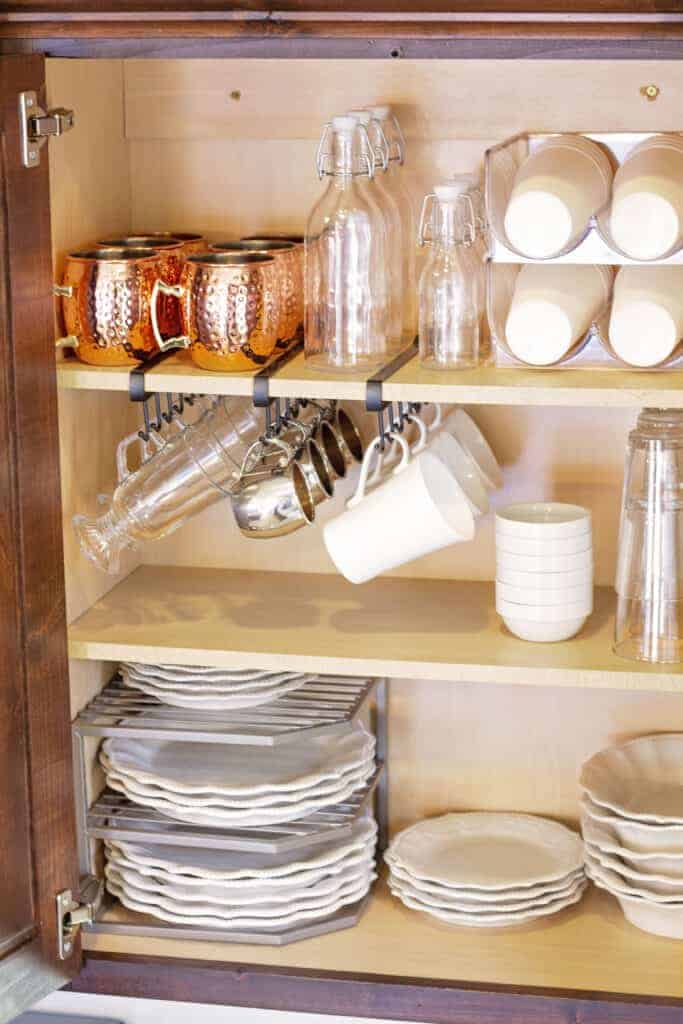
ORGANIZING FOOD IN CABINETS | CABINET CLEAN OUT | ADDING FOODS TO STOCKPILE FROM KITCHEN CABINETS
In conclusion, organizing your kitchen cabinets can make a huge difference in your daily life. Not only will it save you time and energy, but it will also help keep your kitchen clean and clutter-free. By following these simple steps, you can transform your kitchen cabinets into an organized and efficient space.
Firstly, start by decluttering your cabinets and getting rid of any expired or unused items. This will make it easier to see what you have and what you need.
Next, group similar items together and assign them a designated space in your cabinets. This will make it easier to find what you’re looking for and keep everything organized.
Lastly, consider investing in some storage solutions like stacking shelves or pull-out drawers to maximize your cabinet space and make the most of your kitchen storage.
By following these simple steps, you can transform your kitchen cabinets into an organized and efficient space that will make meal prep and cooking a breeze. So go ahead and tackle those cabinets, your future self will thank you!

